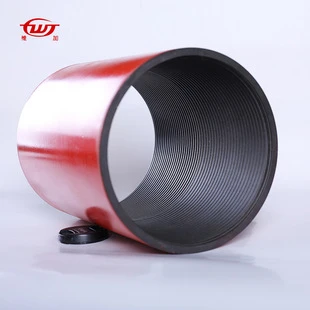- Afrikaans
- Albanian
- Amharic
- Arabic
- Armenian
- Azerbaijani
- Basque
- Belarusian
- Bengali
- Bosnian
- Bulgarian
- Catalan
- Cebuano
- Corsican
- Croatian
- Czech
- Danish
- Dutch
- English
- Esperanto
- Estonian
- Finnish
- French
- Frisian
- Galician
- Georgian
- German
- Greek
- Gujarati
- Haitian Creole
- hausa
- hawaiian
- Hebrew
- Hindi
- Miao
- Hungarian
- Icelandic
- igbo
- Indonesian
- irish
- Italian
- Japanese
- Javanese
- Kannada
- kazakh
- Khmer
- Rwandese
- Korean
- Kurdish
- Kyrgyz
- Lao
- Latin
- Latvian
- Lithuanian
- Luxembourgish
- Macedonian
- Malgashi
- Malay
- Malayalam
- Maltese
- Maori
- Marathi
- Mongolian
- Myanmar
- Nepali
- Norwegian
- Norwegian
- Occitan
- Pashto
- Persian
- Polish
- Portuguese
- Punjabi
- Romanian
- Russian
- Samoan
- Scottish Gaelic
- Serbian
- Sesotho
- Shona
- Sindhi
- Sinhala
- Slovak
- Slovenian
- Somali
- Spanish
- Sundanese
- Swahili
- Swedish
- Tagalog
- Tajik
- Tamil
- Tatar
- Telugu
- Thai
- Turkish
- Turkmen
- Ukrainian
- Urdu
- Uighur
- Uzbek
- Vietnamese
- Welsh
- Bantu
- Yiddish
- Yoruba
- Zulu
Understanding Casing Collars in Oil and Gas Operations for Enhanced Performance
The Importance of Casing Collars in Oil and Gas Drilling
In the oil and gas industry, efficient drilling operations are crucial for maximizing productivity and ensuring safety at the drilling sites. One of the often-overlooked components of drilling technology is the casing collar. Despite its seemingly simple design and function, the casing collar plays a significant role in enhancing the integrity of wellbore stability, facilitating accurate perforation, and contributing to overall drilling safety.
A casing collar is a mechanical device that is installed in the casing string of a well during the drilling process. It is typically positioned at intervals along the casing to provide various functionalities that are critical to the success of a well. The primary purpose of casing collars is to provide a point of support and a location for key operations, such as cementing, perforating, and wireline interventions.
One of the main functions of casing collars is to aid in cementing operations. When cement is pumped into the annulus between the casing and the borehole, the casing collar acts as a stopping point, ensuring that the cement can be effectively distributed throughout the entire casing section. This is vital for establishing a hydraulic seal that keeps fluids contained within the well, preventing unwanted fluid migration and potential contamination of underground aquifers.
Moreover, casing collars enhance the mechanical strength of the wellbore
. By distributing forces evenly along the casing string, they help to mitigate the risk of buckling or casing collapse, which can be catastrophic in high-pressure environments. The placement of casing collars at strategic intervals allows for better load transfer and provides anchorage points that strengthen the overall structure of the well.casing collar

In addition to their structural benefits, casing collars serve important operational functions during perforation and completion stages. When it comes time to perforate the casing to allow for oil and gas flow, casing collars provide distinct reference points that can be utilized during the perforating process. Technicians can easily identify the positions of these collars, which helps to ensure that the perforation guns are accurately placed and fired. This precision is critical for maximizing production rates and minimizing the potential for damage to the casing.
Furthermore, casing collars often come equipped with various features that enhance their functionality. For instance, some collars are designed with integrated monitoring systems that allow for real-time data collection regarding pressure, temperature, and other critical parameters within the wellbore. Such advancements in technology not only aid in immediate operational decisions but also contribute to long-term data analysis, which can inform future drilling strategies.
Safety is another paramount concern in drilling operations, and casing collars play a role in maintaining safe conditions at the drilling site. By ensuring encapsulation and protection of the casing string, they help to prevent blowouts and other hazardous events. In the event of an emergency, the presence of casing collars can facilitate quick access to critical wellbore data and provide anchoring capabilities for safety equipment, such as blowout preventers.
In conclusion, the casing collar may be a small component in the grand scheme of oil and gas drilling, but its significance cannot be underestimated. From enhancing wellbore integrity to serving as reference points for critical operations, casing collars contribute to the efficiency, safety, and success of drilling activities. As the industry continues to evolve and embrace new technologies, the role of casing collars will undoubtedly adapt and expand, reinforcing their importance in drilling operations. Understanding their function and benefits is essential for engineers and operators looking to optimize performance and ensure the longevity of their wells.
-
Tubing Pup Joints: Essential Components for Oil and Gas OperationsNewsJul.10,2025
-
Pup Joints: Essential Components for Reliable Drilling OperationsNewsJul.10,2025
-
Pipe Couplings: Connecting Your World EfficientlyNewsJul.10,2025
-
Mastering Oilfield Operations with Quality Tubing and CasingNewsJul.10,2025
-
High-Quality Casing Couplings for Every NeedNewsJul.10,2025
-
Boost Your Drilling Efficiency with Premium Crossover Tools & Seating NipplesNewsJul.10,2025







